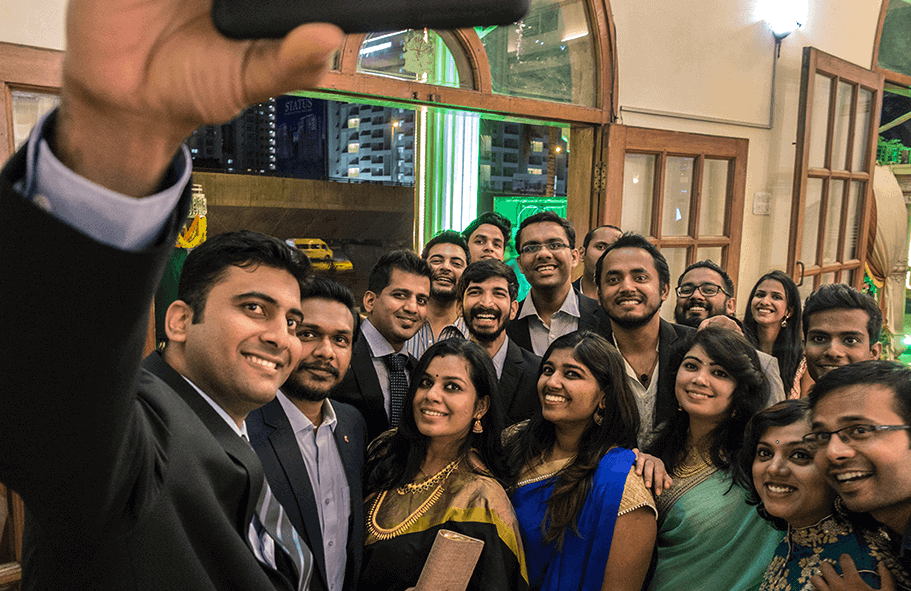Navigating the space as a newbie developer making your initial steps towards BUIDLing on web3 might be a difficult nut to crack. With decentralisation being so important throughout the landscape, there is some fragmentation as well. And it is precisely this fragmentation that transforms your beginnings into a nightmare, hurling you into the unknown with no map to guide you. You might have questions like which node do I need to set up? What blockchain protocol should I use? How can I expand the scope of my blockchain operations? What is the most effective tool for Web3 developers? These are just a few of the difficult problems you’ll have to solve on your own, or at best by trawling through search engine results, Stack Exchange and Stack Overflow articles.
Stop searching for answers to your questions. Simply follow along as we take a deeper look at the web3 stack in a language that everyone can comprehend. That stated, let’s get into the specifics!
What is a Web3 Stack?
In essence, the Web3 stack is made up of five primary layers, which are listed from bottom to top:
- Hardware and infrastructure, that includes nodes and virtual machines
- Data which is the container for keys, hashes, and transactions
- Peer-to-peer (p2p) interaction which is supported by the network
- Consensus, which determines how nodes achieve agreement
- Presentation and application that includes all BUIDLing tools and decentralised apps (DApps)
Above all, these refer to the architecture itself, and what makes things difficult for many is that the same Web3 stack is frequently seen arranged in a different set of layers-Layer 0 (L0), which makes blockchain a reality, Layer 1 (L1), also known as the foundation layer, Layer 2 (L2), or supporting technology, and Layer 3 (L3), where DApps live.
Web2 Development vs. Web3 Development
Computer applications are created via software development. Programs have three major components:
- Front-end (what users engage with)
- Back-end (which is not visible to users)
- Database (where essential data is saved)
In web2 and web3, the front end that a user sees in a mobile or desktop browser is comparable. Because both front-ends use React, a popular development framework for online and mobile applications. Web2 and web3 differ under the hood. User-defined ownership in Web3 is supported through new backend frameworks and database types. Web2 applications employ centralised databases, but web3 apps use decentralised databases (blockchains). It requires new backends and primitives such as wallets. Web2 technologies are very developer-friendly as a result of decades of accumulated development. Web2’s ready-to-use solutions, proven infrastructure, shared code libraries, and simple frameworks make development a breeze. Web3, on the other hand, necessitates the use of specific expertise in order to connect with advanced infrastructure. And often involves redundant processes due to a less defined stack, forcing teams to rethink their approach.
The Web3 Developer Stack
If we consider web3 to be a vehicle, then web3 libraries/dApps are the chassis, smart contracts/blockchain are the internal hardware components, wallets serve as the driver’s licence, and the node is the gasoline required to power the car.
Web3 Libraries/dApps
Web3 libraries allow us to easily communicate with the blockchain, conduct transactions, and deal with smart contracts. We may create decentralised apps that exist on the blockchain or interact with it by using a web3 library, such as web3.js, ethers.js, and web3.py.
Smart Contracts
Smart contracts are code snippets that exist on the blockchain. They operate inside the blockchain and are unchangeable. Solidity is the most often used programming language for smart contracts. The majority of developers create, build, and deploy contracts using Remix IDE. When a local development environment is required, tools such as Truffle, Hardhat, and Brownie come in helpful.
Nodes/Web3 Providers
To get data from the blockchain, nodes or Web3 providers are required; nodes run a copy of the blockchain. Nodes are an important component of the web3 developer stack since a web3 library cannot communicate with smart contracts without them. They act as a gateway into the blockchain realm.
Wallets
A blockchain wallet address serves as an individual’s identification while also storing the owner’s numerous cryptocurrencies. When we wish to execute a write operation on the blockchain, we must first validate the transaction and pay a fee to the network; this is made easier by utilising a wallet, such as MetaMask. Alternatively, you may design your own ETH address/wallet with JavaScript, Python, Ruby, Go, or PHP.
Best Environments for Web3 Development
Web3 developers should examine the depth and breadth of developer tools offered when choosing a blockchain network on which to construct a dApp. Fortunately, EVM-compatible chains benefit from years of Ethereum development and a plethora of battle-tested development environments.
- Hardhat: Hardhat is a javascript software development environment that enables developers to compile, test, deploy, and debug Ethereum software. It can be extended with flexible plugins to allow developers to easily customise local blockchain development environments, and it comes with extensive documentation for troubleshooting and debugging.
- Truffle: Truffle is a collection of three javascript-based developer tools that lets builders create, test, and deploy EVM code while also offering to tool for frontend dApp development. Truffle, Ganache’s principal development environment, testing framework, and deployment pipeline, enables developers to construct a local blockchain rapidly. Drizzle is a collection of frontend libraries used to link frontend components to smart contracts.
- Brownie: Brownie, a Python-based framework for EVM development that competes with Hardhat and Truffle, provides a comprehensive array of Web3 developer tools based on the web3.py package for generating, testing, and deploying dApps.
- Foundry: Meet Foundry, the new kid on the dev environment block. It is a lightning-fast, portable, and modular approach to the subject that focuses on the Rust programming language instead. Foundry, like Truffle, is a collection of Web3 developer tools rather than a single solution. Within it, Forge is in charge of the testing framework, Cast is the main way of communicating with the EVM, and Anvil allows for local node deployment.
Tools for Web3 Development
Over the infrastructure primitives that enable applications to interact with blockchain networks are tools that make it easier for developers to interact with the primitives.
IDEs and Frameworks
Other developers produce code libraries called developer frameworks. Instead of starting from scratch, Web3 frameworks such as Truffle, Moralis, Tatum, and ThirdWeb enable developers to reuse code for smart contract projects. Apps may be created and released. Source code editors, build automation, and debugging tools are all integrated into a unified interface by Foundry and HardHat. User-facing applications may be built and deployed utilising drag-and-drop interfaces on low-code / no-code platforms.
Communication
Messages are sent to end users using web3 apps. A cryptocurrency wallet may notify the user of transaction confirmations. Secure messaging protocols and decentralised communication networks are developed by companies such as XMTP Labs and EPNS. This is done to increase user engagement and allow web3 app notifications.
Analytics
Developers may study, analyse, extract, and visualise blockchain data using a variety of tools and services. APIs and reporting tools for data visualisation in web3 applications are available from Dune, Nansen, and Messari. Flipside crypto provides SDKs and APIs for creating and sharing crypto data insights.
Security and Auditing
Because smart contract attacks are possible, these platforms enable developers to implement security and audit best practises. Developers may use services, frameworks, and monitoring tools like OpenZeppelin, Forta, Certik, and Certora to decrease security risks and vulnerabilities.






